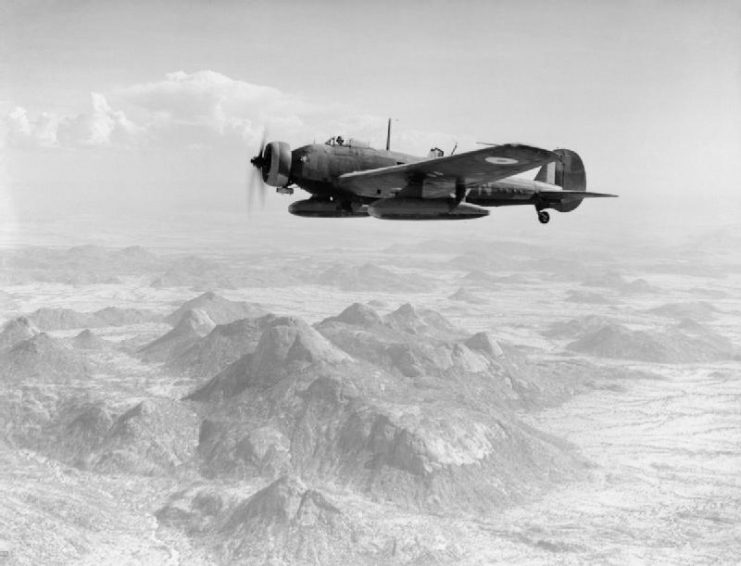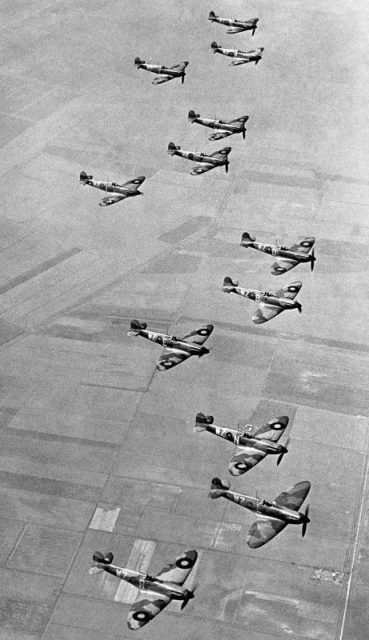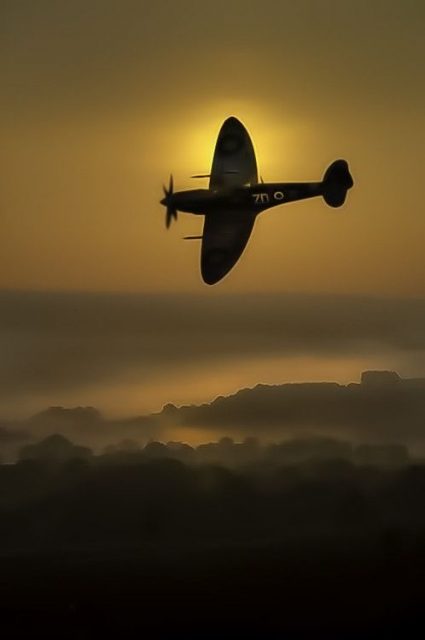Captain Joseph Summers had a peculiar superstition when it came to flying airplane prototypes; he would ritually urinate on the rear wheel of the aircraft he was testing, and for this, he earned the moniker “Mutt.” He was the first man to fly the Spitfire, and he now has a plaque to honor and commemorate his bravery in his home city.
Captain Joseph Summers was a test pilot born in Hull on the tenth of March, 1904, who joined the RAF at twenty and piloted the prototype of the famous fighter in 1936. Easily the most recognizable airplane from the second world war, the Spitfire gave Britain the edge it needed against the Luftwaffe in Battle of Britain in 1940.

Before the war, he worked for a number of companies as a test pilot, including Vickers Ltd, testing fighters and bombers. He was a test pilot for the Wellington bomber and also tested the bouncing bomb designed by Barnes Wallis during the war.
In 1936, he flew the Supermarine Spitfire for the first time. After the war, he returned to test piloting, flying the Valiant V-bomber.
These weren’t the only planes he was involved with, either. Throughout his career, he flew over 300 different types of aircraft, and he is still the record holder for the highest number of flying hours as a test pilot at over 5,600 hours.

His most famous prototype is, of course, the K5054, which would be renamed the Spitfire. Mutt flew the K5054 out of Eastleigh Aerodrome in Hampshire for its maiden flight on March 5th of 1936.
The flight would last for eight minutes, and Summers would recommend that not change a thing be changed. Even so, he flew the aircraft another three times before Jeffrey Quill took over.
His official summary report of how the Spitfire handled indicated that the plane was both simple and easy to fly with no vices. As it stood, visibility was good, and the cockpit was comfortable with an excellent, and stable gun platform.
He passed away in 1954, but before that sad day, Summers had been appointed an officer of the Most Excellent Order of the British Empire Civil Division (O.B.E), in His Majestys New Year’s Honours. Later, on the first of June 1953, he received a promotion to C.B.E.) in Her Majesty’s Coronation Honours.

The dangerous life of the test pilot apparently runs in the family as his brother, Maurice, was also a test pilot and later a Wing Commander in the RAF. He set the Trans-Atlantic speed record at 7.5 hours as he flew the first B-24 Liberator to England.
Robb Robinson, a historian at the University of Hull, has stated that as a citizen of Hull, he hasn’t received nearly the amount of recognition he deserves given the global scale of Summers contributions.

“The city has a series of people who made a global impact like William Wilberforce or Amy Johnson. This is an opportunity to redress the balance, the plaque honors a remarkable tale and the more people that know about Summers’ role the better,” said Robinson.
By the numbers, the Spitfire Mark I had a Merlin engine that could reach a top speed of 362 miles per hour with 1,130 horsepower.
It was 30 feet (9 meters) long with a wingspan of 36 feet (11 meters). Even though the original design went through significant alterations and changes in armaments, the Spitfire Mark I was equipped with eight machine guns. It needed all of those guns for the fight in the Battle of Britain, which started with the Luftwaffe attacking Britain in mid-July 1940.

During the battle, an estimated 1,023 RAF aircraft were lost while countering Hitler’s airmen, but they had done enough so that in late 1940 he abandoned plans for his invasion. In the end, the Luftwaffe lost 1,887 airplanes.

Joseph Summers, Esq., was appointed an Officer of the Most Excellent Order of the British Empire, Civil Division (O.B.E.), in His Majesty’s New Year’s Honours, Wednesday, 9 January 1946. He was promoted to Commander of the Most Excellent Order of the British Empire (Civil Division) (C.B.E) Monday, 1 June 1953.
